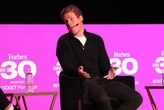Over the past two decades, I’ve had the privilege of leading brainstorming sessions with some of the world’s most brilliant minds—from Nobel laureates and royal families to government think tanks and Fortune 500 executives. I’ve partnered with top creative agencies who came to me frustrated with the diminishing ROI of their own brainstorming efforts. All this has put me in a unique position to see both the potential and the pitfalls of traditional brainstorming up close. And what my experience has revealed might come as a surprise: the very methods we’ve long turned to in order to tap into our creative potential might be the very culprits responsible for holding us back.
It is time to pull back the curtain on why your brainstorming sessions might be failing you. And more importantly, how to get your team’s creative juices flowing. Here’s why traditional brainstorming sessions are a waste of time—and what to do instead.
The science behind brainstorming
Imagine this: You’re in a conference room with all your colleagues, brainstorming new ideas for your company’s next big project. Sticky notes are scattered about the room. Dry-erase markers are everywhere, and the scent of the chemicals in them hangs heavy in the air. But as hours pass, as you watch all the scribbling and excitement, you get the sense that you’re wasting your time. And you might just be.
The painful truth is that the most popular form of brainstorming—the structured group ideation session—is a creativity killer when done wrongly. I’ve seen this play out in companies around the world and documented the ways in which it fails in my books. Even technology won’t save you if you ignore some simple truths.
So, why would that happen? The answer is it has to do with the way our brains are wired, and with the group dynamic that’s present in these sessions. Today, team brainstorming has become an accepted part of corporate culture, even though decades of research demonstrates that this method often generates fewer (and lower quality) ideas than individuals working alone.
An intricate set of psychological and social mechanisms undermine our creative efforts during brainstorming sessions. Let’s take a look at some of the most prevalent traps:
1. Conformational bias and leadership priming: If a powerful leader voices an opinion early in the brainstorming process, the outcome can be drastically limited. Team members will often unconsciously try to conform their contributions to the leader’s opinion, trying to fit and confirm rather than exploring ideas in alternative directions that might truly be more creative.
2. Groupthink and conformity pressure: In groups, people become more likely to sway towards the opinion of the majority, thus squashing unique ideas before they get a chance to be voiced.
3. Production blocking: In a typical brainstorming session, only one person can talk at a time. As others wait their turn, they might forget their ideas or self-censor, thus losing potentially useful ideas. This is made worse when sessions are held online.
4. Evaluation apprehension: Although we may have prohibitions against negative evaluation, people still experience themselves as being judged in groups. This evaluation apprehension sometimes leads to self-censorship of novel or unconventional ideas.
5. Social loafing: Some individuals will be lazy, relying on the others to do the creative heavy lifting. This free-rider effect can dramatically reduce the output of a group.
But the most insidious enemy to creativity in brainstorming sessions is what I call the “reactive thinking trap.” Our brains are wired to react to stimuli, something that helped us in our evolutionary past. However, in the context of brainstorming, it causes us to seize on the first good idea we can find, before we’ve had a chance to consider better alternatives.
This kind of reactive thinking is especially harmful because it fails to take into account one of the most important aspects of the creative process: incubation. My latest book takes a deep dive into the science behind how our brain’s creativity engine works. Perhaps the most important finding is that our most creative ideas often don’t occur while we are in a brainstorming session. They happen when we are at rest, or better still, when we are in what is called a “focused daydreaming” state.
Alternatives to traditional brainstorming
How can we make the most of our team’s creative spark? The answer lies in a smarter, brain-friendly approach to ideation.
1. Brainsprint, don’t brainstorm: As opposed to marathon brainstorming sessions, I coined the term ‘brainsprint’—multiple short bursts of creativity spaced out over time. Rather than doing a three-hour group call, or board-room session, split the sprint into six 30-minute meetings, over several days. Trust me, you will see remarkable gains in insight and creativity.
2. Harness the power of daydreaming: Give team members time to think. This is where the value from brainsprinting really comes into play. Most people do not get their best ideas in a boardroom, or on a group call. They find them when they go for a walk, or doodle, or just sit quietly. A lot of great ideas are conceived when we appear to be doing nothing at all.
3. Start individual ideation: Get each individual to generate ideas separately before bringing the group together. This bypasses many of the social pitfalls of brainstorming and really does lead to more diverse thought. Make team members write down their ideas and share them beforehand.
4. Employ structured methods: Employ structured methods to execute the creative process. Using a framework to lead from idea generation to implementation will always provide a more positive impact. Remember, innovation is not an event, it is a process.
5. Harness technology: Employ digital tools that enable submission of ideas as well as asynchronous collaboration. This can help overcome apprehension regarding evaluation and production blocking. These tools can often help turn the ideas into action.
In redesigning creativity at work, we’re not trying to find the best ways to generate more ideas more quickly. We’re trying to foster conditions under which unique, valuable ideas have the best chance to emerge and thrive. That means respecting the need of our brains to make novel associations, to work hard, and also to relax and incubate.
Although the brainstorming session might be fun and feel productive, they often do not generate a lot of breakthrough ideas. By understanding the science of creative thinking and using more effective ideation techniques, we can unlock the creative potential of our teams.
It is not a matter of thinking outside the box, but a recognition there is no box. Once we embrace that, we’re liberated to explore a range of creative possibilities beyond traditional brainstorming. The next time you’re about to call a brainstorming session, stop, and ask yourself: Are you setting up your team for creative success or just more hours of wasted potential?











No comments